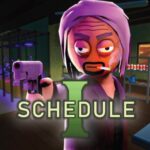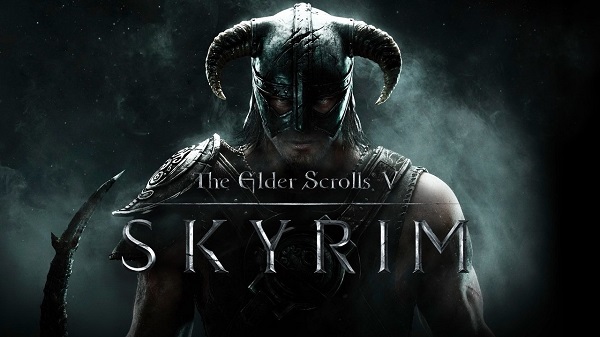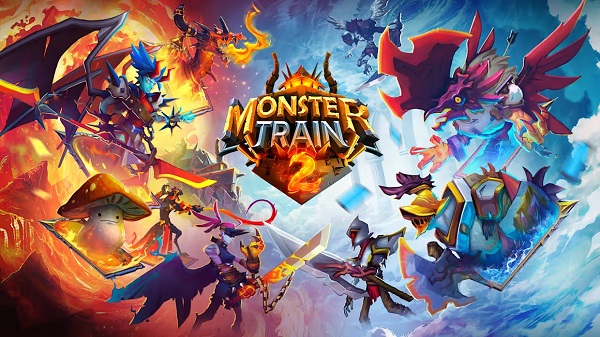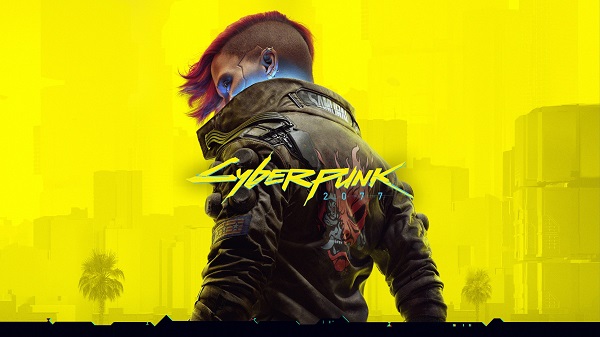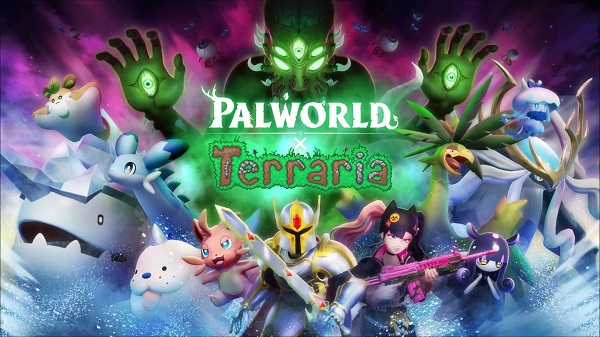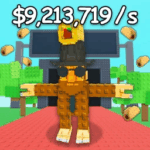Advertisement
Popular Now
The Legend of Zelda: Tears of the Kingdom, released on May 12, 2023, for the Nintendo Switch, builds on the open-world foundation of Breath of the Wild with ambitious new mechanics, earning a 96/100 on Metacritic and selling over 20 million units by 2024. Its sprawling Hyrule, now expanded with sky islands and the Depths, encourages boundless exploration, while new abilities like Ultrahand redefine player creativity. However, Ultrahand, which allows players to manipulate and combine objects to create structures and vehicles, introduces a significant issue: its steep learning curve and clunky controls disrupt gameplay flow, particularly for players unaccustomed to its complexity. This article delves into how Ultrahand’s intricate mechanics affect pacing, engagement, and accessibility across the game’s progression, analyzing its design and impact on the player experience.
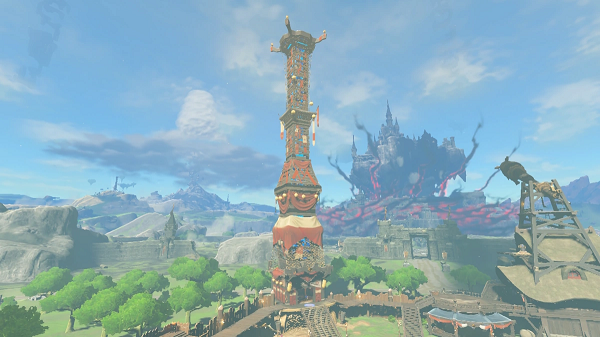 The game’s opening on the Great Sky Island introduces Ultrahand as a core mechanic, tasking players with building simple rafts and carts to navigate floating platforms. Skyview Towers, which unlock map sections, further showcase Ultrahand’s versatility by requiring creative solutions to reach them.
The game’s opening on the Great Sky Island introduces Ultrahand as a core mechanic, tasking players with building simple rafts and carts to navigate floating platforms. Skyview Towers, which unlock map sections, further showcase Ultrahand’s versatility by requiring creative solutions to reach them.
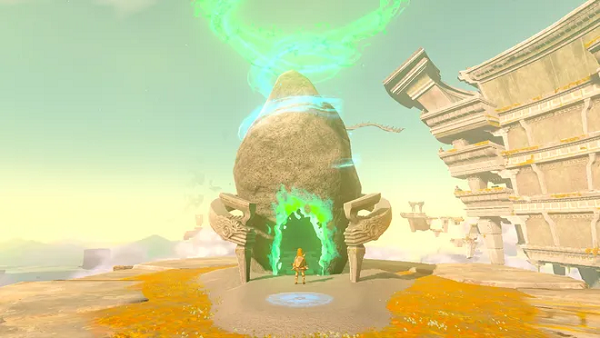 Shrines, scattered across Hyrule, rely heavily on Ultrahand for puzzles, requiring players to build bridges, catapults, or contraptions to progress. These challenges highlight Ultrahand’s depth but also its complexity.
Shrines, scattered across Hyrule, rely heavily on Ultrahand for puzzles, requiring players to build bridges, catapults, or contraptions to progress. These challenges highlight Ultrahand’s depth but also its complexity.
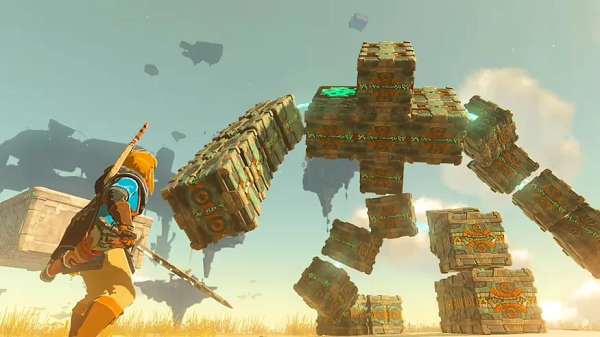 Ultrahand extends to combat, allowing players to craft weapons or traps, like attaching explosives to arrows or building turrets with Zonai cannons.
Ultrahand extends to combat, allowing players to craft weapons or traps, like attaching explosives to arrows or building turrets with Zonai cannons.
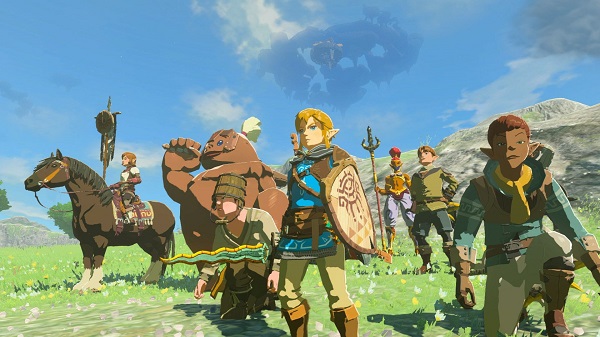 The final battles against Ganondorf require Ultrahand for environmental navigation and combat setups, testing players’ mastery of the mechanic.
The final battles against Ganondorf require Ultrahand for environmental navigation and combat setups, testing players’ mastery of the mechanic.
The Skyview Towers: Introducing Ultrahand’s Potential
 The game’s opening on the Great Sky Island introduces Ultrahand as a core mechanic, tasking players with building simple rafts and carts to navigate floating platforms. Skyview Towers, which unlock map sections, further showcase Ultrahand’s versatility by requiring creative solutions to reach them.
The game’s opening on the Great Sky Island introduces Ultrahand as a core mechanic, tasking players with building simple rafts and carts to navigate floating platforms. Skyview Towers, which unlock map sections, further showcase Ultrahand’s versatility by requiring creative solutions to reach them.
A Creative Spark
Ultrahand’s debut is thrilling, allowing players to glue logs, fans, and Zonai devices to cross gaps or climb cliffs. As IGN notes, this “encourages players to build their own solutions,” fostering a sense of ingenuity. The Great Sky Island’s tutorials, guided by Rauru, ease players into Ultrahand’s basics, making early tasks feel like natural extensions of exploration.Early Friction
However, Ultrahand’s controls—using motion or analog sticks to rotate and position objects—feel imprecise on the Switch’s aging hardware. A Reddit post on r/zelda describes the “fiddly” rotation mechanics, noting frustration when aligning parts. This clunkiness disrupts the flow of early exploration, as players spend more time wrestling with controls than enjoying their creations, setting a precedent for ongoing challenges.Shrines: Ultrahand as a Puzzle Cornerstone
 Shrines, scattered across Hyrule, rely heavily on Ultrahand for puzzles, requiring players to build bridges, catapults, or contraptions to progress. These challenges highlight Ultrahand’s depth but also its complexity.
Shrines, scattered across Hyrule, rely heavily on Ultrahand for puzzles, requiring players to build bridges, catapults, or contraptions to progress. These challenges highlight Ultrahand’s depth but also its complexity.
Puzzle-Driven Creativity
Shrines like In-isa Shrine emphasize Ultrahand’s role in problem-solving, with tasks like constructing a raft to reach a chest showcasing its potential. Polygon praises these as “dense with accomplishment,” as players devise unique solutions. The open-ended nature aligns with the game’s philosophy of player-driven innovation, making successes feel personal.Overwhelming Complexity
Yet, the complexity of Ultrahand puzzles can stall momentum. As Medium’s Maria Mak notes, some shrines require “overly precise” manipulation, frustrating players when objects misalign or detach. For newcomers, the lack of clear guidance amplifies this, breaking the flow of exploration as players pause to master controls, a sentiment echoed in r/tearsofthekingdom complaints about “tedious” shrine tasks.Regional Phenomena: Ultrahand in Story Progression
The Regional Phenomena quests, tackling crises in four regions, integrate Ultrahand into larger-scale challenges, such as building vehicles to navigate Gerudo’s sandstorms or Rito’s blizzards. These moments test players’ mastery of the mechanic.Narrative Integration
In the Gerudo quest, players use Ultrahand to construct minecarts and fans to traverse a desert temple, tying the mechanic to the story’s urgency. The New York Times highlights how these tasks “push the boundaries of open-world games,” blending exploration with narrative. The sense of agency in solving regional crises feels rewarding when constructions succeed.Flow Disruptions
However, the high stakes of these quests amplify Ultrahand’s control issues. Misaligned parts or unstable vehicles, as noted in r/zelda, lead to repeated failures, breaking immersion as players restart complex builds. The time-intensive process clashes with the narrative’s momentum, making story progression feel laborious rather than seamless.The Depths: Ultrahand’s Environmental Challenges
The Depths, a vast underground realm, demand Ultrahand for navigation and combat, using Zonai devices like rockets and hover platforms to traverse dark chasms or battle enemies.A New Frontier
The Depths’ eerie atmosphere and sparse light make Ultrahand essential for creating light-emitting vehicles or bridges. IGN’s Nintendo Switch 2 review notes the “night-and-day” difference in exploration with Ultrahand’s constructs. These moments showcase the mechanic’s versatility, encouraging experimentation in a hostile environment.Control Struggles Amplified
The Depths’ complex terrain exacerbates Ultrahand’s clunkiness. As Nintendo World Report observes, precise placement is critical in tight spaces, but the controls often lead to misaligned or unstable builds. Players spend excessive time tweaking constructions, disrupting the flow of exploration and combat, especially when under pressure from gloom-infected enemies.Sky Islands: Verticality and Ultrahand’s Limits
Sky islands introduce vertical exploration, where Ultrahand is crucial for building flying machines or climbing structures to reach floating platforms.Soaring Ambition
Building airships with balloons and fans, as seen in the Great Sky Island, embodies the game’s theme of boundless freedom. Gale Academic OneFile describes this as making players “feel like creative geniuses.” Successful builds reward players with breathtaking views and a sense of mastery over Hyrule’s skies.Frustrating Execution
Yet, the precision required for aerial constructs is daunting. A r/tearsofthekingdom post laments “constant crashes” due to misaligned parts, as Ultrahand’s rotation mechanics struggle with the Switch’s analog sticks. This disrupts the flow of sky exploration, turning moments of potential awe into exercises in patience, especially for less dexterous players.Combat: Ultrahand as a Tactical Tool
 Ultrahand extends to combat, allowing players to craft weapons or traps, like attaching explosives to arrows or building turrets with Zonai cannons.
Ultrahand extends to combat, allowing players to craft weapons or traps, like attaching explosives to arrows or building turrets with Zonai cannons.
Creative Combat
In battles against constructs or Lynels, Ultrahand enables innovative strategies, such as launching spiked platforms or creating decoys. Common Sense Media praises this for encouraging “creativity and imagination.” These moments integrate Ultrahand into combat’s flow, making fights dynamic when builds work as intended.Disrupting Battle Flow
However, mid-combat construction is cumbersome, as Slant Magazine notes, with Ultrahand’s slow interface clashing with fast-paced encounters. Players often pause to build under pressure, breaking immersion. The lack of quick-build options, as criticized in r/zelda, makes Ultrahand feel like a hindrance in heated moments, reducing combat’s fluidity.Side Quests: Ultrahand’s Optional Depth
Side quests, like helping Hudson rebuild Tarrey Town, use Ultrahand for tasks like assembling houses or bridges, adding optional depth to the mechanic.Enhancing Immersion
These quests, praised by The New York Times for their “joy of discovery,” make Ultrahand feel integral to Hyrule’s world. Building a stable for Addison’s signs or a raft for a stranded NPC ties creativity to community, reinforcing the game’s exploratory spirit.Optional Overload
Yet, the complexity of these tasks can overwhelm. Medium’s UX analysis critiques the “tedious” precision required, as players spend minutes aligning parts for minor rewards. This optional nature mitigates some frustration but still disrupts flow for completionists, as r/tearsofthekingdom users note, wishing for streamlined controls.Accessibility Concerns: Ultrahand’s Barrier
Ultrahand’s complexity raises accessibility issues, particularly for players with motor or cognitive challenges, impacting the game’s inclusivity.A Steep Learning Curve
As Can I Play That? notes, Ultrahand’s motion controls and precise inputs are “mostly inaccessible” for some players. The lack of simplified control options or tutorials for advanced builds alienates newcomers, contrasting with Breath of the Wild’s more intuitive mechanics.Missed Opportunities
Nintendo could have included accessibility features, like preset builds or adjustable control sensitivity, as suggested in r/zelda discussions. Without these, Ultrahand’s complexity disrupts flow for a significant portion of players, limiting the game’s universal appeal despite its creative promise.Endgame Challenges: Ultrahand’s Climactic Test
 The final battles against Ganondorf require Ultrahand for environmental navigation and combat setups, testing players’ mastery of the mechanic.
The final battles against Ganondorf require Ultrahand for environmental navigation and combat setups, testing players’ mastery of the mechanic.







